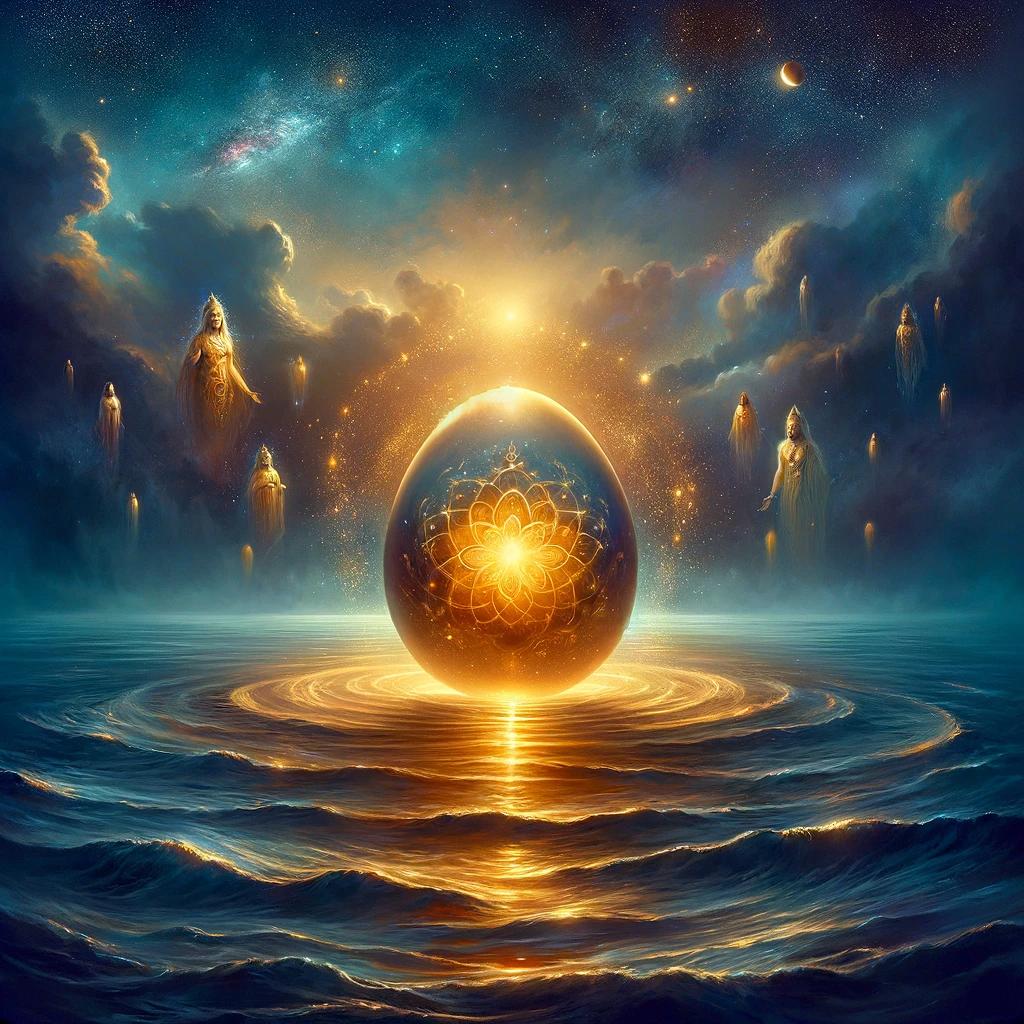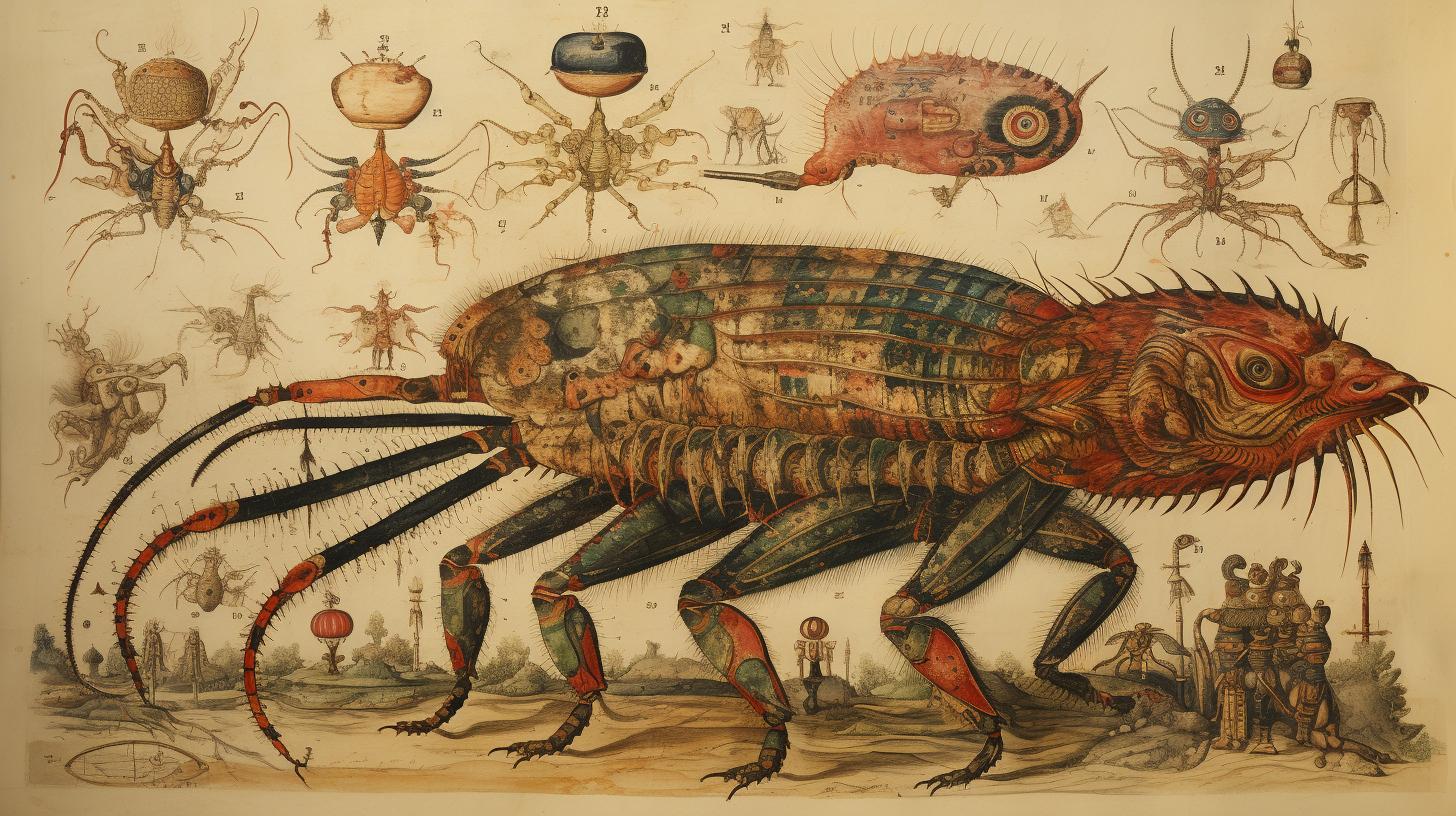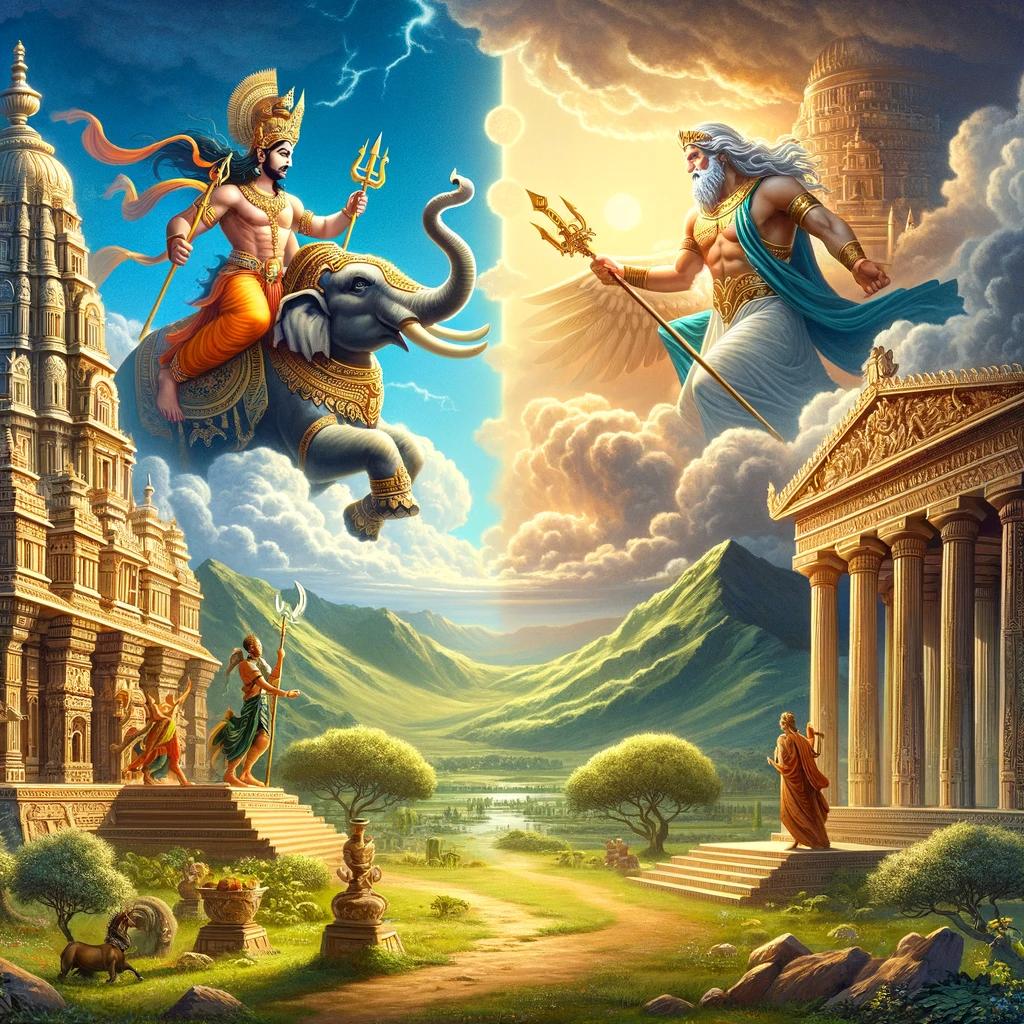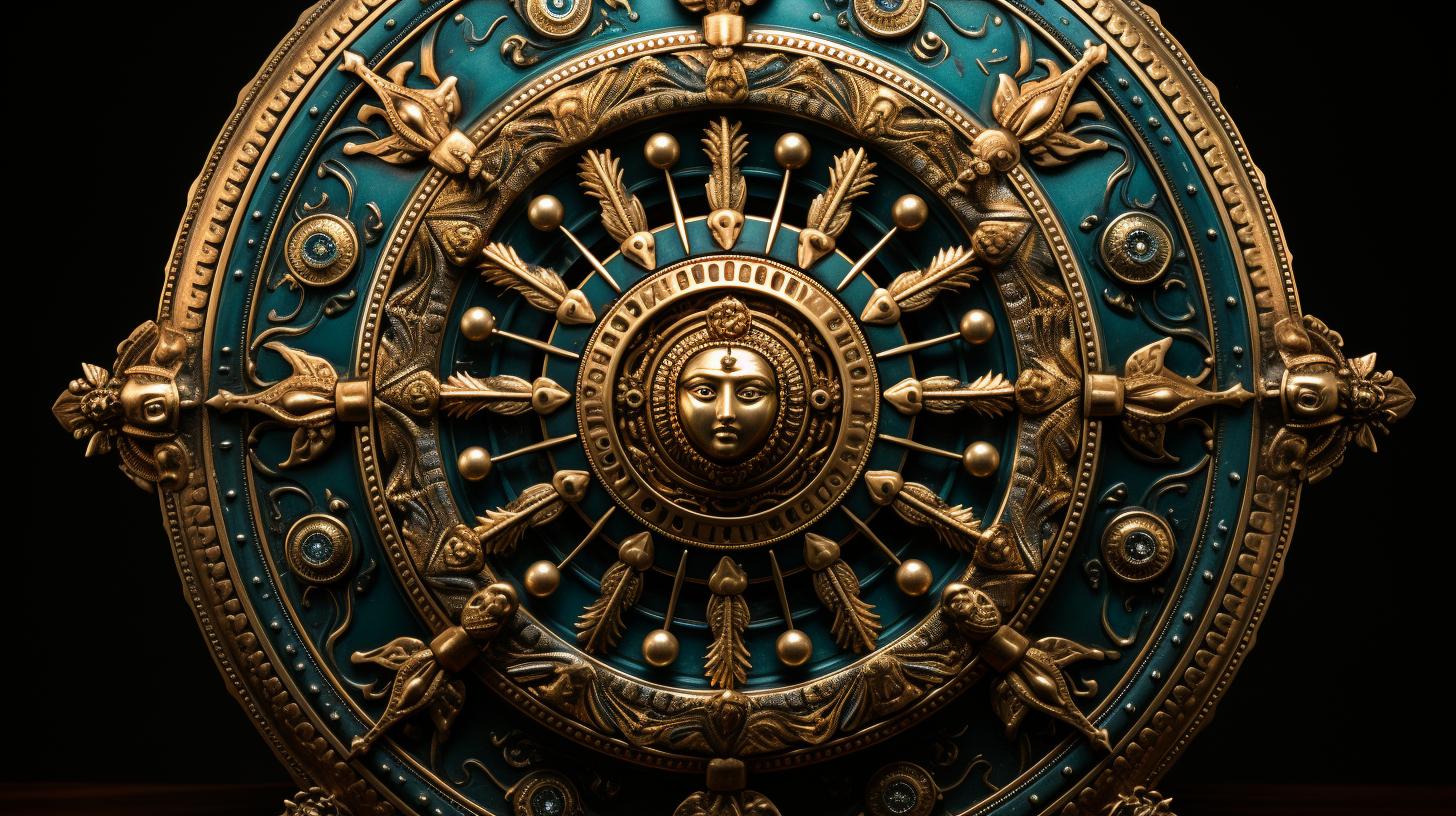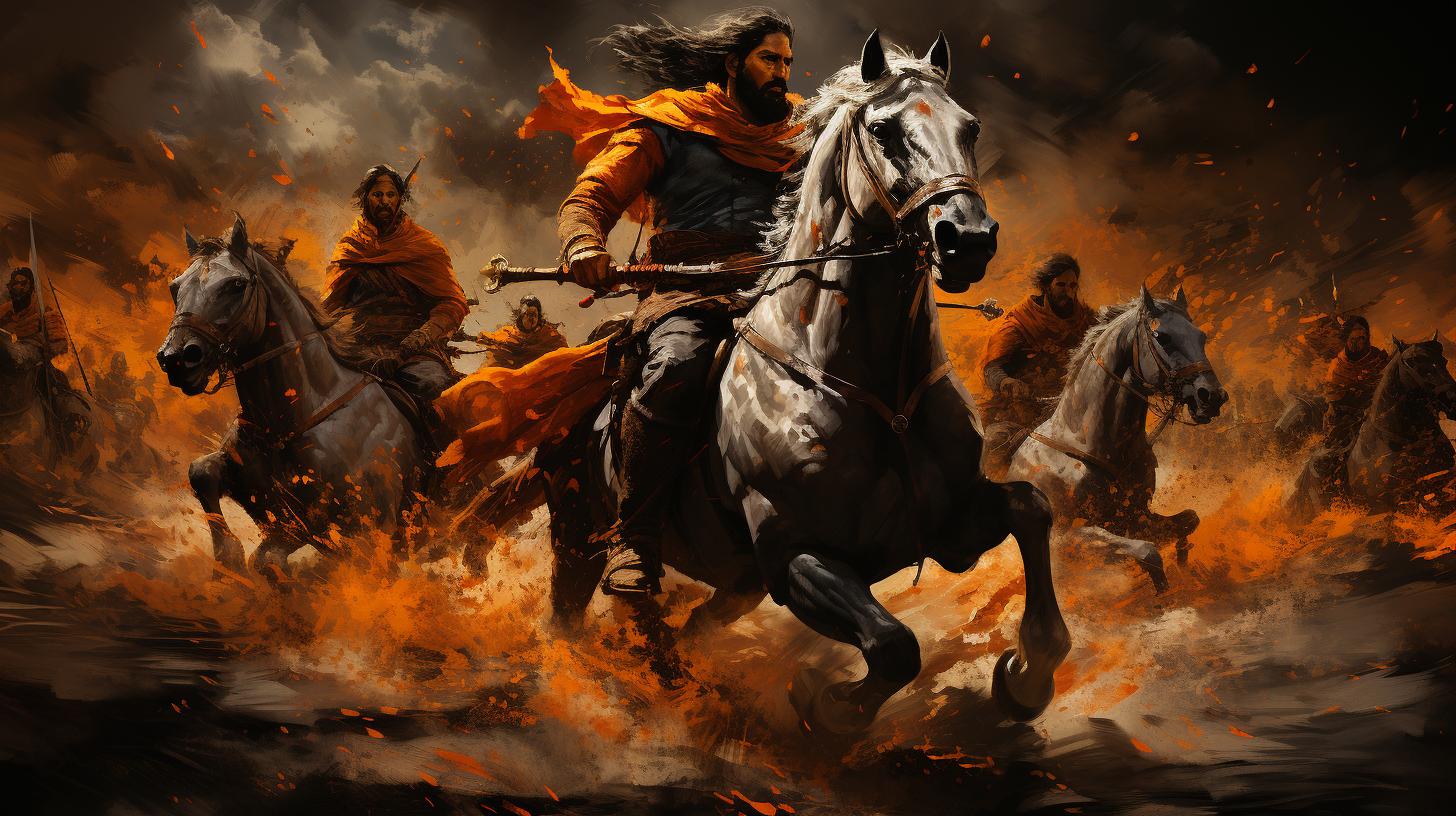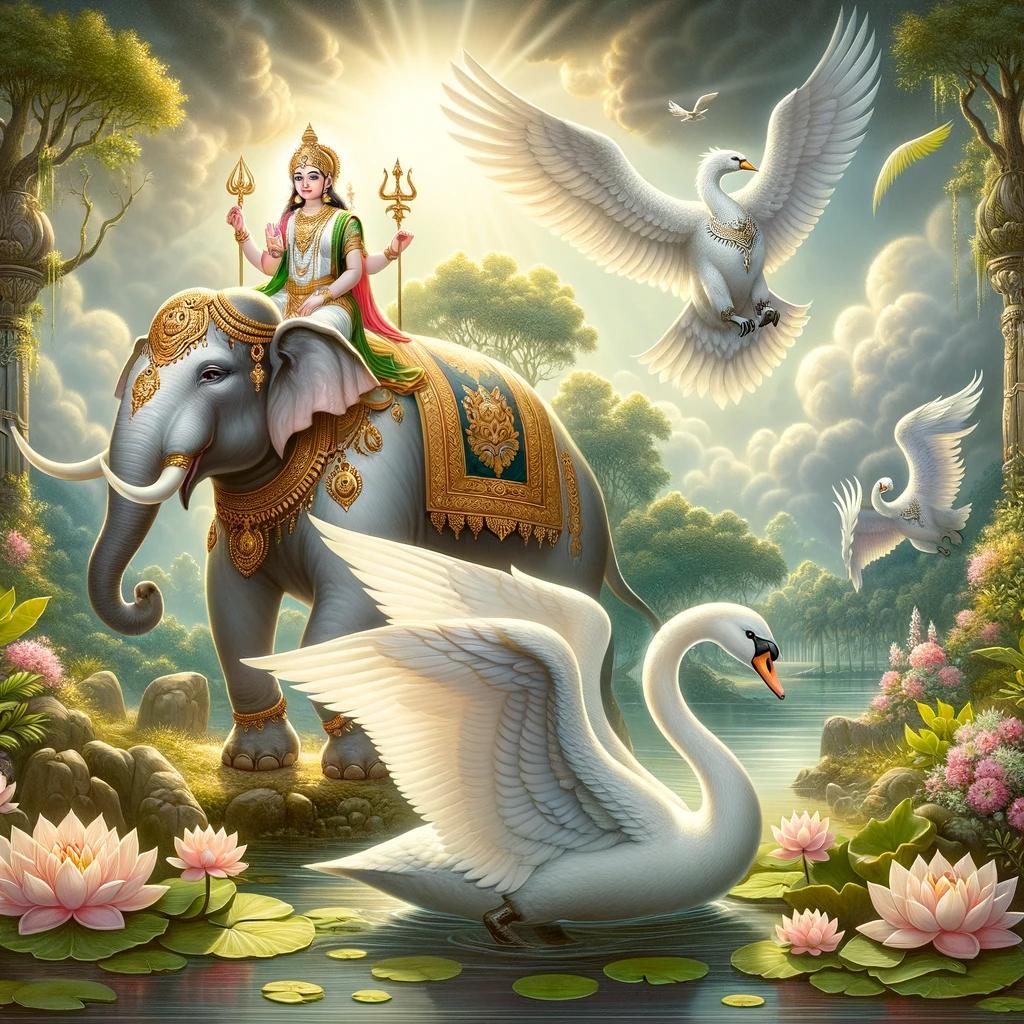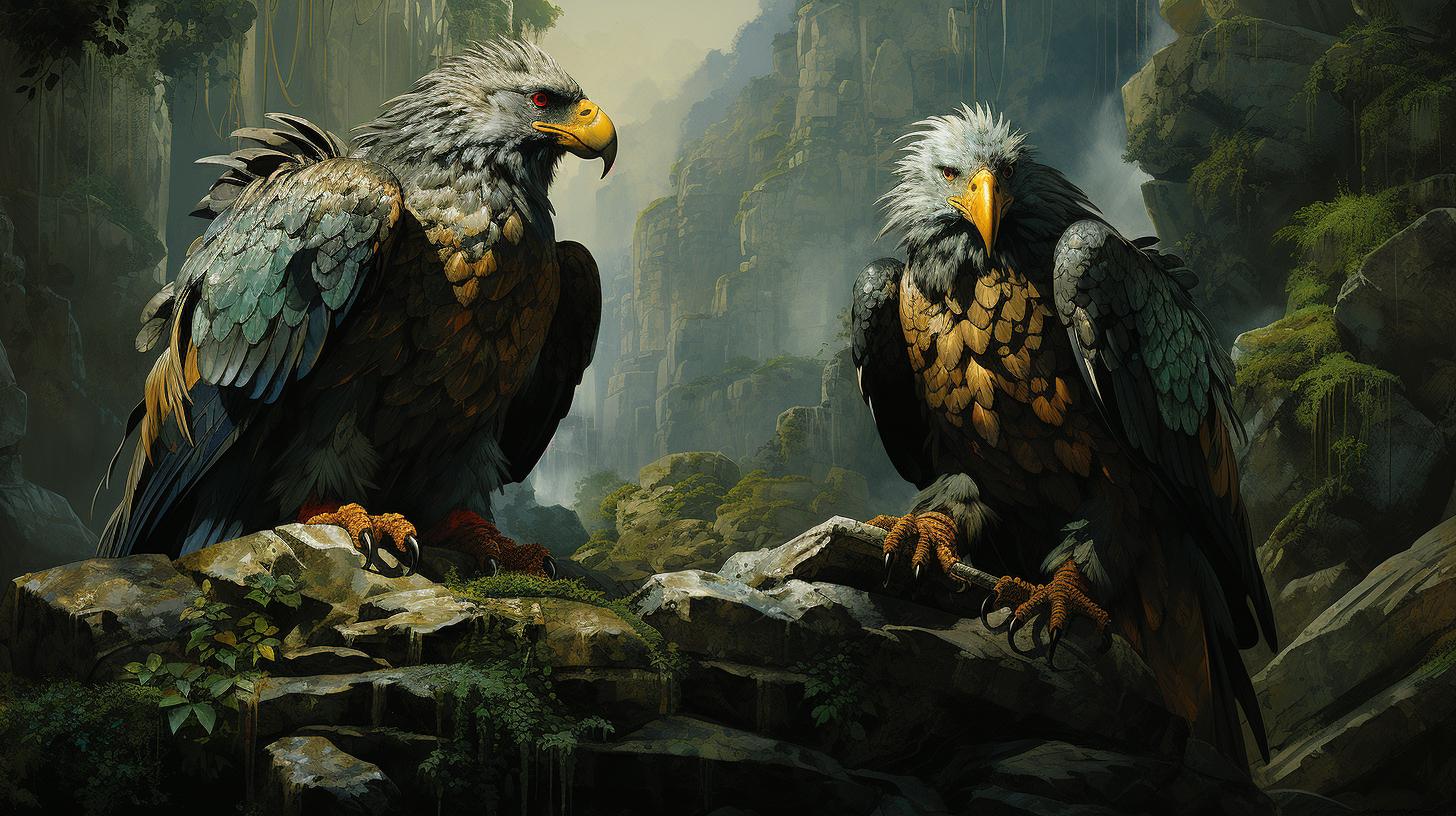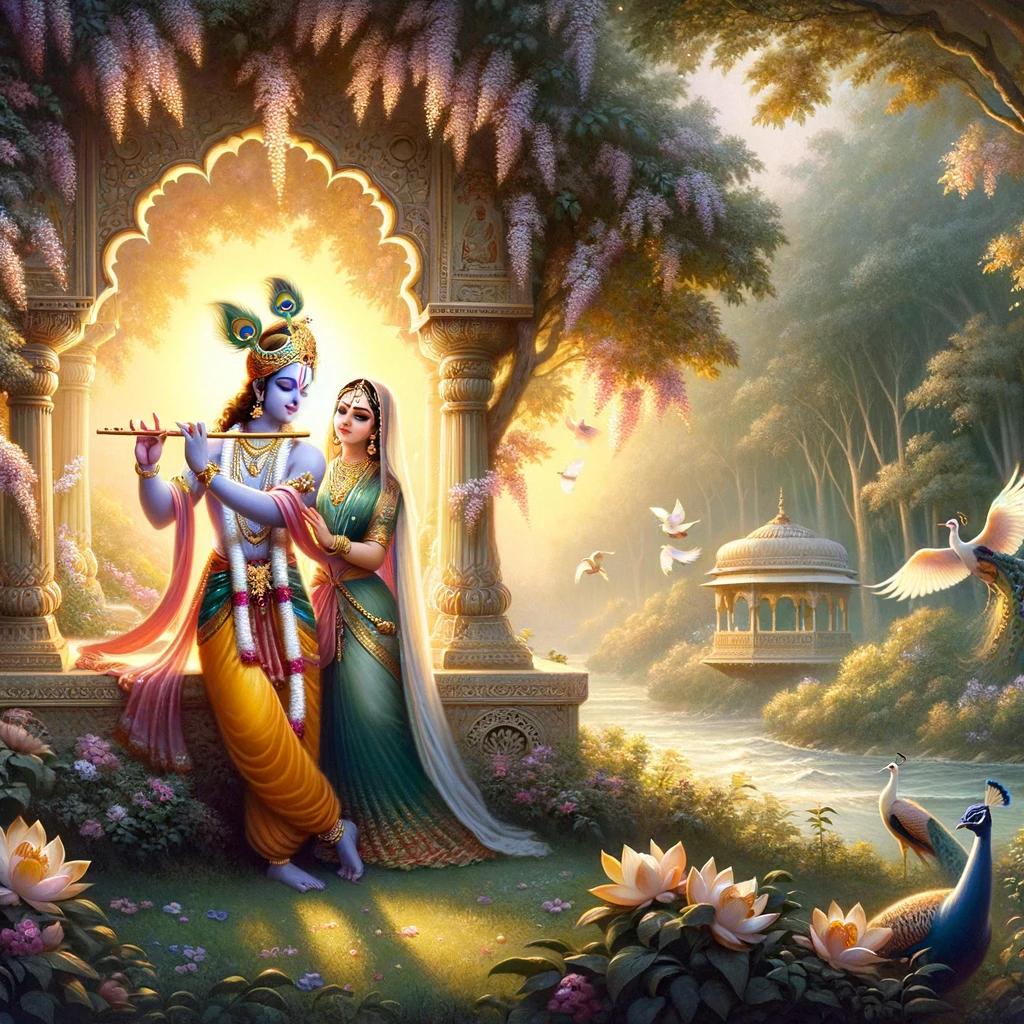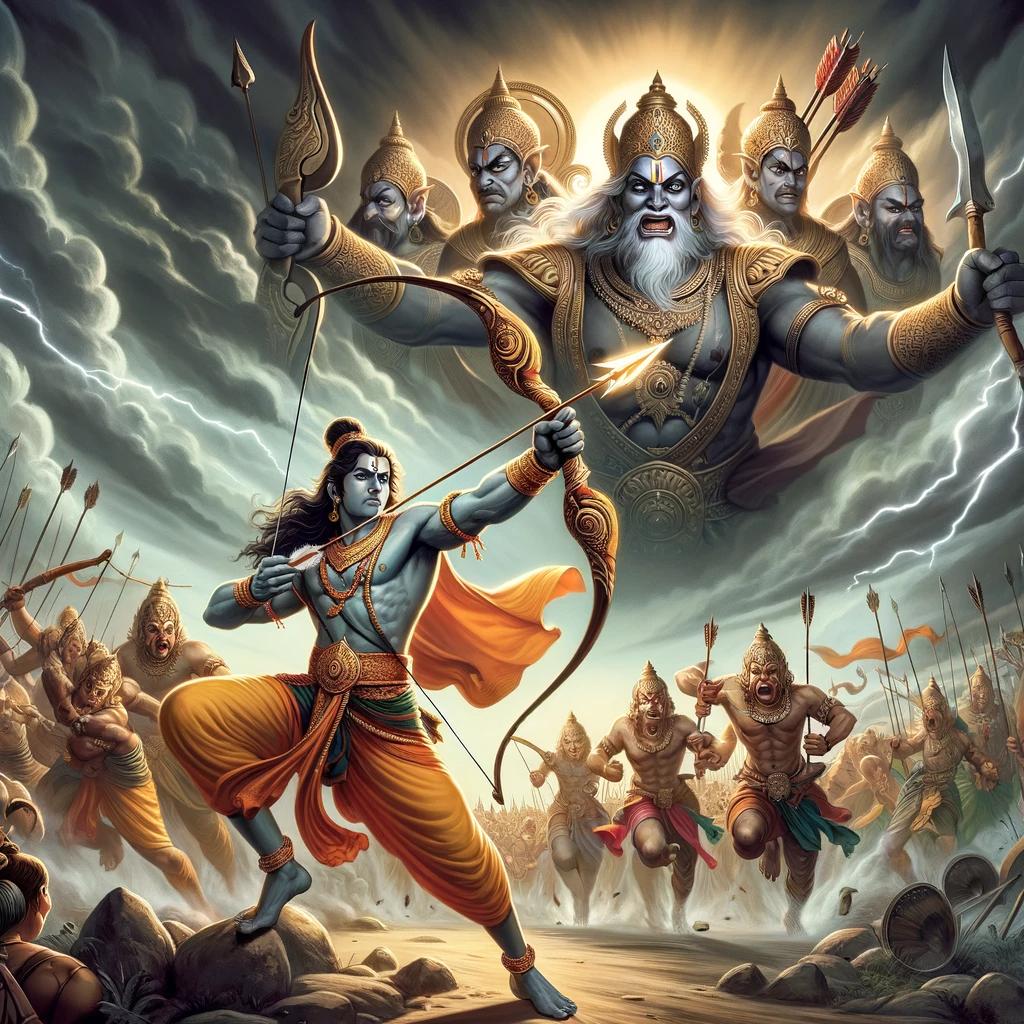Indian Mythology Creation Story: Exploring the Eternal Cycles of Creation, Preservation, and Destruction in Hinduism
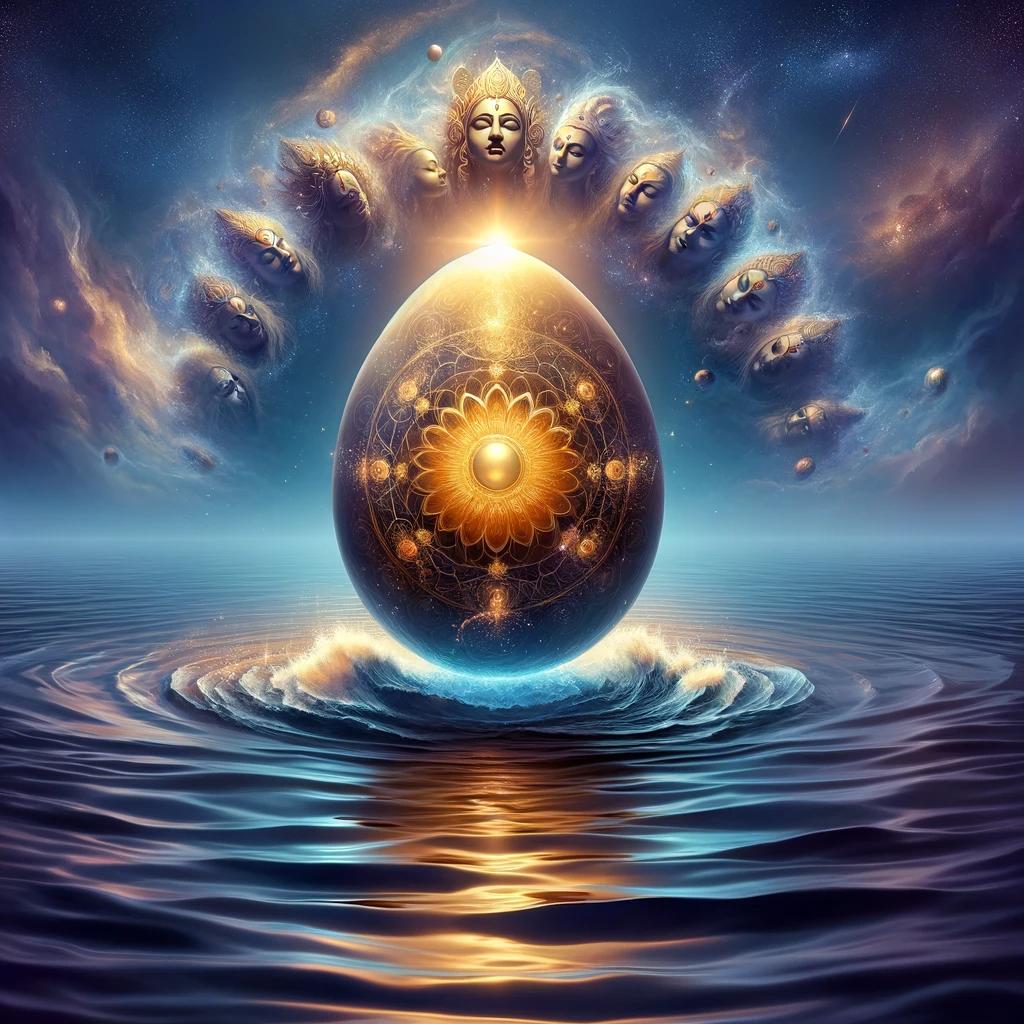
The Indian mythology Creation Story explores the origins of the universe in Hindu beliefs. It revolves around the eternal cycles of creation, preservation, and destruction, guided by the gods Brahma, Vishnu, and Shiva. Brahma, the Creator, is associated with various stories of how the universe came into existence, including emerging from a lotus flower and dividing himself to create all living beings.
Despite Brahma’s significance, his worship has diminished compared to Vishnu and Shiva in contemporary Hinduism. Additionally, the creation story encompasses themes of reincarnation and the infinite nature of the universe.
Overview of Indian Mythology Creation Story
The Indian mythology Creation Story encompasses various narratives and beliefs surrounding the origin of the universe. Hinduism, a prominent religion in India, presents a rich tapestry of explanations for the creation of the cosmos, emphasizing the eternal cycles of creation, preservation, and destruction.
Central to this mythology are the gods Brahma, Vishnu, and Shiva, who together form the divine triumvirate known as the Trimurti, with each deity having a specific role in the process of creation.
Hindu Beliefs on the Origin of the Universe
Within Hinduism, the universe is perceived as existing in endless cycles, with no definitive beginning or end. These cycles are perpetuated by the constant interplay between the primordial forces of creation, preservation, and destruction.
According to Hindu beliefs, the universe undergoes cyclical periods of manifestation, known as yugas, followed by periods of dissolution. These cycles are intricately woven into the fabric of existence, reflecting the eternal nature of the cosmos.
Role of Brahma, Vishnu, and Shiva in Creation
Brahma, Vishnu, and Shiva are revered as the principal deities responsible for the cosmic cycles of creation, preservation, and destruction. Brahma, known as the Creator, possesses the power to bring the universe into being.
Vishnu, the Preserver, sustains and maintains the universe during its manifestations. Shiva, the Destroyer, terminates each cycle to prepare for the next phase of creation. Together, these deities serve as custodians of the universal order, shaping and governing the intricate workings of existence.
The divine interplay between Brahma, Vishnu, and Shiva highlights the unity and cooperation required for the cosmic processes of creation and preservation. Each deity plays a unique role in maintaining the balance and harmony of the universe, showcasing a profound synergy within Hindu mythology.
Stories of Brahma’s Creation of the Universe
Within the realm of Indian mythology, intriguing tales abound regarding Brahma’s role in the creation of the universe. These stories delve into the intricate details of how Brahma, known as the Creator, brought the cosmos into existence through various means.
Brahma and the Lotus Flower
One captivating narrative describes Brahma’s emergence from a lotus flower that blossomed from the navel of Vishnu. As the lotus unfurled, Brahma resided within it, commencing the process of creation.
He divided the flower into three parts, which ultimately transformed into the skies, the Earth, and the vast expanse of space.
Brahma’s Division of Himself
Another fascinating story portrays Brahma’s self-division as a means of creation. He split himself into two halves, resulting in the manifestation of a man and a woman. Through this division, all living beings came into existence, spanning the diverse spectrum of life that populates the universe.
Creation of Offspring by Brahma’s Mind
Additional accounts emphasize Brahma’s power to create offspring through his mind. These stories highlight his ability to generate divine progeny, such as gods, goddesses, and celestial beings, by merely channeling his thoughts and intentions.
These enthralling narratives surrounding Brahma’s creation of the universe offer profound insights into the Hindu mythology’s intricate tapestry. Each story holds its own distinctive essence, enlightening us on the diverse and enchanting ways through which the cosmos came into being.
Iconography and Representation of Brahma
Physical Attributes and Symbolism of Brahma
Brahma, as depicted in Hindu iconography, is represented as a four-headed and four-armed deity. His physical attributes embody significant symbolism. The four heads of Brahma represent the four Vedas, sacred texts in Hinduism that contain the knowledge of the universe.
Each head is oriented towards one of the four cardinal directions, symbolizing the all-encompassing nature of Brahma’s wisdom and knowledge. Additionally, Brahma’s skin color is often depicted as either red or golden, signifying his association with divine energy and illumination.
Furthermore, Brahma is depicted sitting on a lotus, representing purity, enlightenment, and the blossoming of knowledge. The lotus symbolizes Brahma’s transcendence from impurities, similar to how the lotus emerges unstained and pristine from muddy waters.
This imagery highlights Brahma’s sacred role as the creator and provider of spiritual enlightenment.
Brahma’s four arms carry various items that hold symbolic significance. In one hand, he holds a spoon-shaped object known as a kamandalu, symbolizing austerity and self-control. Another hand holds a sacred text, representing knowledge and wisdom.
The other two hands carry a rosary and a lotus, symbolizing devotion and spiritual purity, respectively. Together, these physical attributes and symbolism associated with Brahma visually represent his divine role as the Creator and the bestower of knowledge and spirituality.
Temples Dedicated to Brahma
Although Brahma may not hold as prominent a place in contemporary Hinduism as Vishnu and Shiva, there are still temples dedicated to his worship. One of the most famous is the Brahma Temple in Pushkar, a town in Rajasthan, India.
This temple stands as a testament to the ancient reverence bestowed upon Brahma.
The Brahma Temple in Pushkar is considered one of the few existing temples dedicated solely to Brahma. It attracts devotees and tourists alike, who come to pay their respects and seek blessings from the Creator.
The temple’s architecture and design reflect the cultural and religious significance of Brahma in Hindu mythology. Inside the temple, devotees can witness the idol of Brahma, adorned with flowers and offerings, surrounded by an atmosphere of spirituality and devotion.
While Brahma’s worship may be relatively limited compared to other deities in modern Hinduism, the existence of temples dedicated to him underscores the enduring influence of his role as the Creator in Indian mythology.
- The Brahma Temple in Pushkar serves as a testament to Brahma’s ancient reverence
- The temple’s architecture reflects the cultural and religious significance of Brahma
- Devotees visit the temple to seek blessings from the Creator
- The idol of Brahma inside the temple is adorned with flowers and offerings
Brahma’s Significance in Contemporary Hinduism
Within the framework of Hinduism, Brahma, the Creator god, holds a diminished position in comparison to his counterparts Vishnu and Shiva. While Brahma is revered in ancient texts, his worship and importance have waned over time.
Decreased Worship and Importance in Comparison to Vishnu and Shiva
Brahma’s reduced significance in contemporary Hinduism can be attributed to various factors. Firstly, the absence of a dedicated sect specifically focused on his worship has contributed to a decline in his following.
Additionally, the emergence and prominence of other major deities like Vishnu and Shiva, who represent preservation and destruction respectively, have overshadowed Brahma’s role as the Creator.
As a result, Brahma has become marginalized within Hindu religious practices, with devotees primarily directing their worship towards Vishnu and Shiva. While Brahma is part of the Trimurti, the supreme trinity, his role in the creation process is often overshadowed by the ongoing preservation and destruction aspects fulfilled by Vishnu and Shiva.
Temples and Devotion to Brahma
Despite Brahma’s diminished importance, there are still a few temples dedicated to his worship.
The most famous among them is the Brahma Temple located in Pushkar, India. Pilgrims and devotees visit this sacred site to pay their respects to Brahma, seeking blessings for creativity, knowledge, and wisdom.
Although Brahma may not have a widespread following or receive extensive devotion in contemporary Hinduism, his presence still holds significance in the cultural and religious fabric of India. The existence of temples dedicated to him serves as a reminder of his role as the Creator and ensures that his worship persists, albeit to a lesser extent compared to Vishnu and Shiva.
Other Creation Stories in Hindu Mythology
The rich tapestry of Hindu mythology encompasses various creation stories beyond Brahma’s role in the universe’s formation.
These additional narratives add depth and complexity to the understanding of creation in Hindu beliefs.
The Rig Veda’s Hymn of Creation
One prominent creation story in Hindu mythology is found in the Rig Veda, one of the oldest sacred texts. This hymn speaks to the mystery surrounding the origin of the universe.
It ponders the timeless question of how everything came into existence, revealing that even the ancient sages were unable to provide a definitive answer.
The hymn explores the interconnectedness of nature and the divine, emphasizing the limitless power and boundless creativity that fuel the ongoing cosmic evolution.
It invites contemplation and awe, encouraging individuals to marvel at the immense wonders of existence.
Cycle of Life, Death, and Rebirth in Hindu Beliefs
Another crucial aspect of creation in Hindu mythology is the belief in the cycle of life, death, and rebirth, known as samsara. This concept outlines the continuous flow of existence, where every being goes through a series of rebirths driven by their actions, desires, and karma.
According to this belief, life is seen as a journey of spiritual growth and learning, with each incarnation providing opportunities for self-realization and liberation from the cycle of samsara. Death is not viewed as the end but rather a transition to a new phase, with the soul carrying its karmic imprints into subsequent lives.
This profound understanding of life’s cyclical nature shapes Hindu beliefs, influencing attitudes towards death, the pursuit of righteous actions, and the cultivation of spiritual awareness.
- Birth, death, and rebirth as fundamental aspects of existence
- Karma and its impact on the cycle of samsara
- Viewing death as a transition and opportunity for spiritual growth
These creation stories and beliefs highlight the intricate complexities of the Hindu universe and the profound philosophical insights it offers to its followers.
They provide a glimpse into the eternal nature of existence, the unending potential for growth and transformation, and the interconnectedness of all living beings.
Exploring the Complexity of the Universe and Hindu Beliefs
Within Indian mythology Creation Story, the concept of exploring the complexity of the universe and Hindu beliefs is an intriguing aspect.
It reveals the profound understanding of the infinite nature of the universe and its relationship with Brahma’s creation. Additionally, it sheds light on the significant influence of reincarnation on Hindu beliefs and the subsequent impact on individuals’ lifestyles.
Infinite Nature of the Universe and Brahma’s Creation
Delving into the infinite nature of the universe, Hindu mythology acknowledges that the universe operates in eternal cycles of creation, preservation, and destruction. Brahma, the Creator, plays a crucial role in these cycles, using his divine power to shape and give life to the cosmos.
The various stories surrounding Brahma’s creation, such as the emergence from a lotus flower and the division of himself, emphasize the intricacies and expansiveness of the universe.
The Lotus Flower in Brahma’s Creation
- The tale of Brahma’s creation involving the lotus flower symbolizes the beauty and purity of the universe’s genesis.
- The lotus represents the birthplace of Brahma, with its petals separating and becoming the heavens, Earth, and space.
- This metaphorical depiction underscores the interconnectedness and harmonious balance within the universe.
Brahma’s Division of Himself
- In another account, Brahma divides himself, creating a man and a woman who become the progenitors of all living beings.
- This narrative highlights Brahma’s immense power and his role as the ultimate source of creation.
- It portrays the intricate complexity of the universe, with every being deriving from the original division of the divine Creator.
Reincarnation and Its Influence on Hindu Beliefs and Lifestyle
Reincarnation, a central belief in Hinduism, greatly influences the spiritual and philosophical perspectives of followers.
The cycle of life, death, and rebirth shapes their understanding of the universe’s intricacy and the eternal journey of the soul.
Reincarnation: The Continuous Cycle
- Hindus believe that the soul reincarnates after death and goes through various life experiences to learn and evolve.
- This cyclical process emphasizes the never-ending nature of existence and the potential for infinite growth and enlightenment.
- It also underscores the interrelationship between individual actions and their consequences in future lives.
Influence on Hindu Beliefs and Lifestyle
- The belief in reincarnation shapes Hindu ethics and morality, as adherents strive to accumulate positive karma for favorable future lives.
- It inspires individuals to lead righteous, compassionate lives, fostering harmony and empathy within society.
- Moreover, the concept of reincarnation instills resilience and hope, offering solace in the face of worldly struggles and hardships.
The exploration of the universe’s complexity and the influence of reincarnation on Hindu beliefs and lifestyles provides fascinating insights into the profound philosophies that guide millions of people.
It encourages contemplation of the infinite nature of existence and the search for enlightenment within the Hindu tradition.
.

